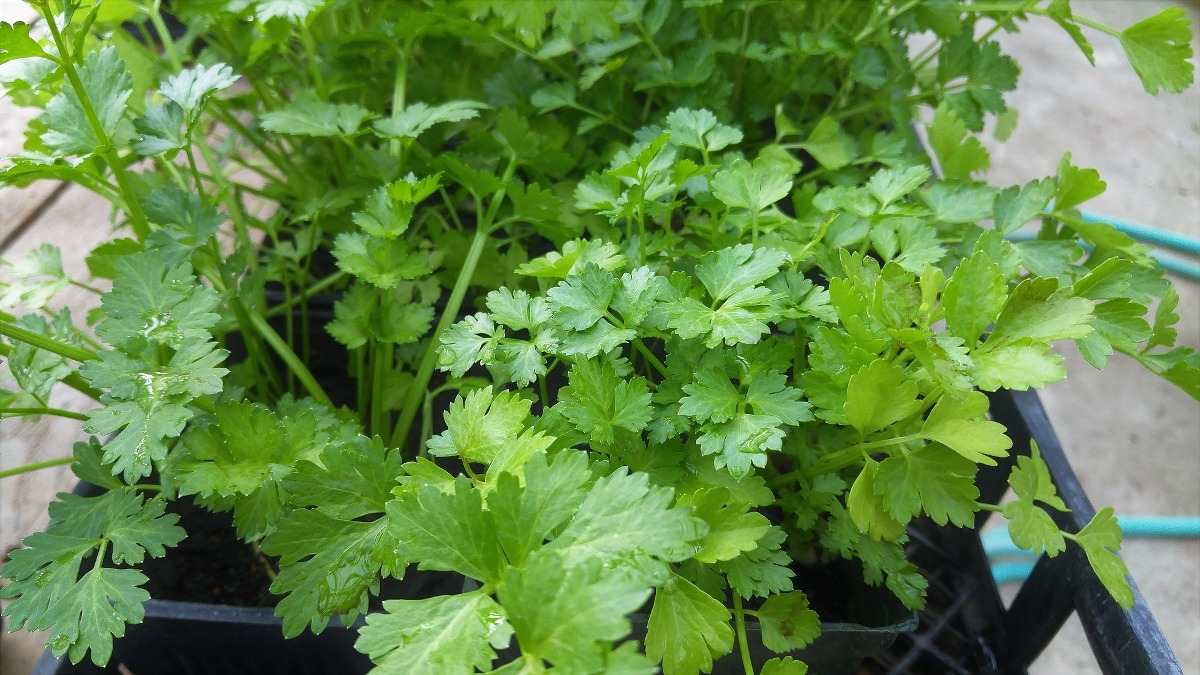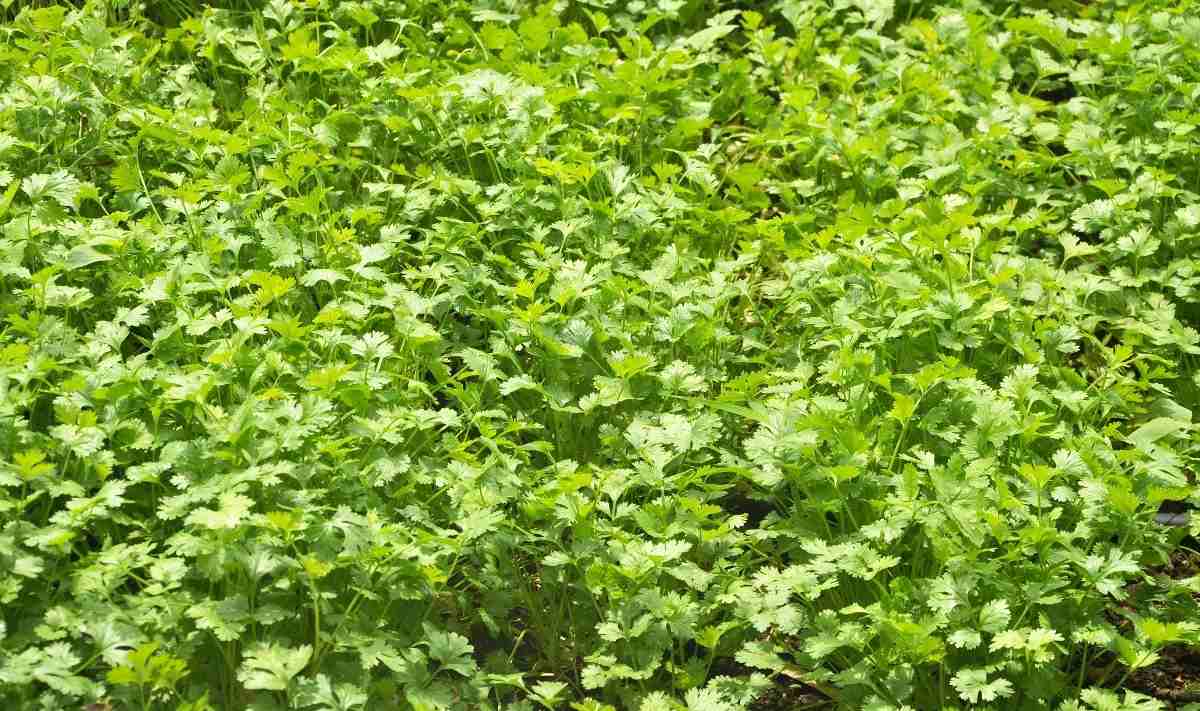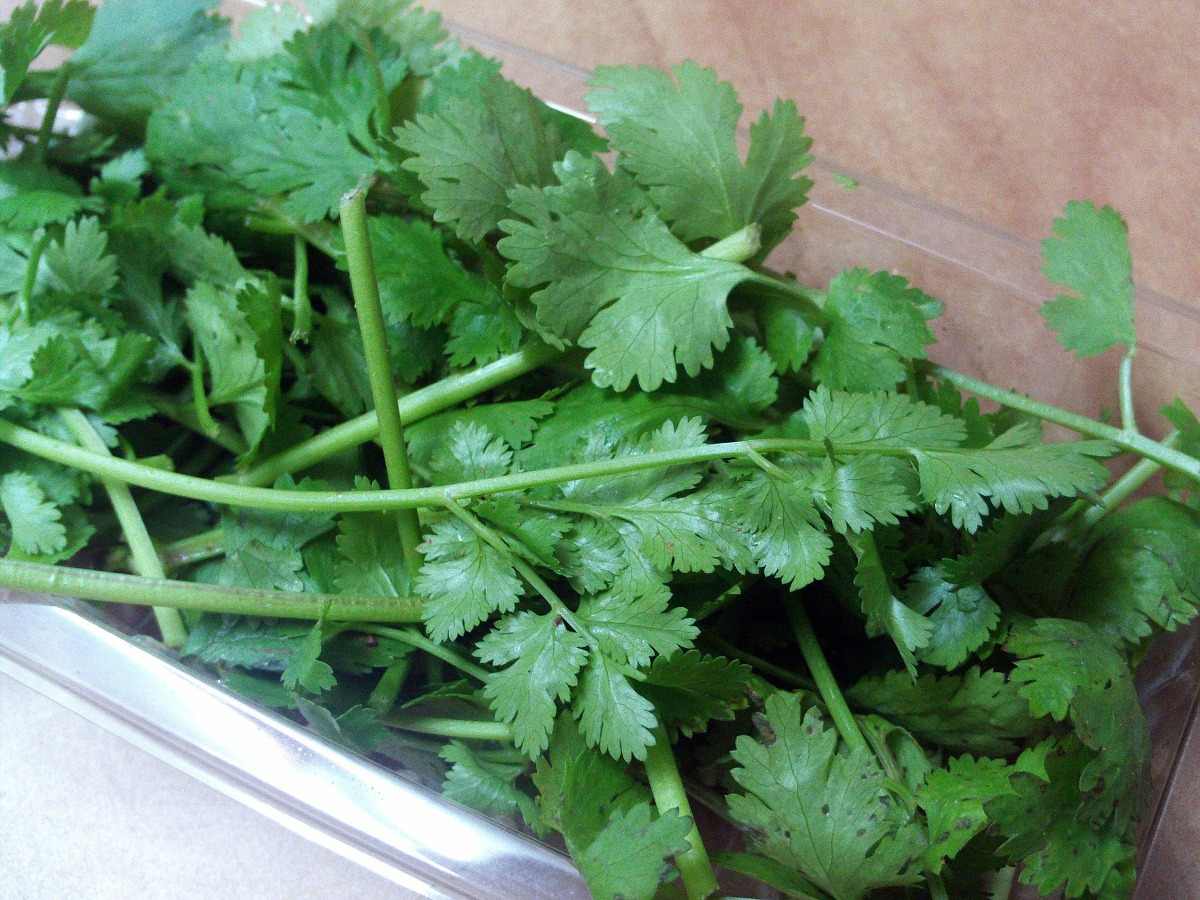Introduction to Growing Coriander in Aquaponics: Coriander (Cilantro) can be grown for its leaves or its seeds. Coriander herb (Coriandrum sativum L.) plant commonly known as dhaniya is used in every Indian household. Aquaponics is one of the most sustainable ways to grow plants. Aquaponics involves a combination of aquaculture and hydroponics in one integrated system. Once you’re set-up, there’s little maintenance or effort required.
A guide to growing coriander in aquaponics (Cilantro/Dhaniya)
Coriander plants give more yield to have higher nutritional requirements, and they grow well in aquaponics systems. Coriander grows fast and is resistant to a lot of pests in aquaponics. It takes between 4 and 6 weeks to begin harvesting if the plants are grown from seedlings, and 6 to 8 weeks if grown from seeds.
Main components of aquaponics systems
Aquaponics systems contain three main components. They are;
- Fish,
- Plants and
- Microbes
The microbes are a normally overlooked part of an aquaponics system, but it is these that do the most important work in the nutrient cycle. Aquaponics uses no soil at all but it can use an alternative growing media such as clay pebbles, pumice stone, lava rock, or the plants in this system can simply be grown in the nutrient-rich waters coming from the tanks.
Aquaponics system is an efficient process of growing plants that uses a minimum of water and space and utilizes waste, resulting in an end product of organic, healthful fish and plants. From a nutritional standpoint, the aquaponics system provides food in the form of both protein (from the fish) and vegetables.
Aquaponics method for growing coriander
Recommended aquaponics method for growing coriander is media beds, NFT and DWC
There are different ways to set up an aquaponics system. They are;
Deep Water Culture Set Up
The deepwater culture system, which is also called as raft-based growing, uses a floating foam raft commonly used in large commercial setups. It allows the roots of the coriander plants to drop into the water and draw nutrients directly from the channel that the water is running through. The water will have been drawn from the tank where the fish are living, and also filtered to remove any solid waste.
Nutrient Film Set Up
This NFT method involves drawing the water from the fish tank through a narrow, cylindrical tube such as PVC, which has holes drilled into the top. The plant roots are then dangled through the holes where they draw nutrients from the water. This system set up works for areas without much ground space, because it can be run across walls or hung from ceilings. It can be set up horizontally or vertically and is great for plants that don’t need any support to grow such as leafy greens.
Media Bed Set Up
The media bed form of aquaponics uses containers filled with rock media for example gravel or expanded clay to support the roots of plants. The media bed is flooded and drained of nutrient-rich water to give the plants the nutrients and oxygen they need. Media-filled bed units are popular designs for small-scale aquaponics. These systems are efficient with space, have a relatively low initial cost and are suitable for beginners because of their simplicity.
Uses of aquaponics for growing plants
You should not miss the How to Grow Tomatoes in Aquaponics.

- Aquaponics gardening eliminates weeds, back strain, and small animal access to the garden.
- The aquaponics system relies on the recycling of nutrient-rich water continuously. In an aquaponics system, there is no toxic run-off from either hydroponics or aquaculture.
- Aquaponics uses 1/10th of the water of soil-based gardening and even less water than hydroponics system or recirculating aquaculture.
- No harmful petrochemicals, pesticides or herbicides could be used.
- Protects the environment by using less water and generating less waste and runoff in aquaponics. Instead, the self-contained system recycles its water and removing potential pollutants along the way. Very little water is wasted and large-scale aquaculture growers are said to use 2% of the water consumed by conventional farming.
- No fertilizer required in aquaponics. With the help of beneficial bacteria, it is produced organically from the fish waste, cutting out fertilizer expense.
- Aquaponics is easily adapted for home and small-scale needs. It can be sized for continuous, economically sound, commercial produce production.
- In aquaponics, gardening beds are most frequently placed above fish-raising tanks, bringing them up to an easy-to-work height. No bending or stooping required in this system.
- Aquaponics uses less water than another gardening up to one-tenth of the amount used in traditional soil-based gardening. Aquaponics system requires less time than regular fish keeping because plants do some of the cleaning work for you.
- Growing plants with aquaponics are completely organic. You simply can’t use any harsh chemicals, as they will be fatal for the fish.
- Aquaponics grow beds are usually waist high, reducing the strain on your back while you tend to plants. The amount of time needed to grow plants with aquaponics versus other forms of food gardening is much less.
Growing coriander in an aquaponics system
Coriander is a very common herb grown in both domestic and commercial aquaponics units owing to its nutritional content (rich in vitamins A and C, calcium and iron) and its high market value. Coriander is an easy herb to grow as the nutrient requirements are relatively low compared with other vegetables.
Water pH for growing coriander in aquaponics
The pH levels of the water in your aquaponics system are another important consideration. Aquaponics pH control is essential to the health of fish, plants, and the bacteria colony that makes the whole system work. The water pH level for growing coriander in the aquaponics system is 6 to 7.

Conditions for growing coriander in aquaponics
In normal conditions, the germination rate of coriander is close to about 50%. To in case the germination rates split the seed and soak in water for 3 days. A fully grown coriander plant can produce up to 40 to 50 cm in height with a spread of 15 cm.
The best temperature to keep the coriander in the aquaponics system will be between 15°F and 25°F. The main difficulty when growing coriander is the initial germination, which can take 2 to 5 weeks, depending on how fresh the seeds are.
You may also like the How to Grow Eggplants from Seeds.
To accelerate germination, seeds can be soaked in warm water (20–23°C) for 24 to 48 hours to soften the seed husks. Afterward, drain the water and sow the coriander seeds into propagation trays. Emerging seedlings will have the appearance of grass, with 2 narrow seed leaves opposite each other. After 5 to 6 weeks, transplant the seedlings into the aquaponics unit during early spring.
Due to its pungent smell, they do not get affected by several pests. They are fast-growing. Then you can pick the leaves as you need from the plants. You can cut the seeds from the plants when they turned grey from green color. Apart from the roots, you can use every part of the coriander plant.
Choosing fish for an aquaponics system
Tilapia – Tilapia is currently the most popular and easily raised food fishes. They reach harvest size quickly and will tolerate a wider range of pH levels and water temperature levels (60 to 75 degrees and above) than most fish.
Catfish – Catfish are leading and commercially raised freshwater fish. They are hardy, suitable to warm-water conditions up to 80 degrees and resistant to several diseases and parasites that can appear in self-contained tanks. Because catfish crowd the bottom of tanks, they are raised at density levels less than those recommended below.
Trout – Trout are a favorite food fish but are difficult to raise. They want relatively cold water temperatures (55 degrees or less). Water this cold will affect the growth of plants.
Carp – Carp are hardy and adaptable to a wide range of conditions and this makes them a good choice for beginners. Not always a favorite food fish, the carp you produce in clean, aquaponics water don’t have the muddy taste of carp taken from rivers and lakes.
Step-by-step process growing coriander in aquaponics
- Fish living in aquaponics tanks excrete waste and respirate ammonia into the water in the tank. Ammonia is toxic to fish in high concentrations, thus it has to be removed from the fish tanks for fish to remain healthy.
- Ammonia-laden water is processed to harvest helpful types of bacteria, for example, Nitrosomonas and Nitrobacter. Then Nitrosomonas turns ammonia into nitrite, while Nitrobacter converts into nitrate. Both of these nitrates could be used as plant fertilizer.
- Nitrate-rich water is introduced to the aquaponically grown plants. These plants are located in beds that sit on tubs filled with water, and the water is enhanced by the nitrate harvested from the fish waste. Then the plants’ bare roots hang through holes in the beds and dangle in the nutrient-laden water.
- The roots of the plants absorb nitrates; act as nutrient-rich plant food. These nitrates, which come from fish manure, algae, and decomposing fish feed, otherwise build up to toxic levels in the fish tanks and kill the fish. But instead, serve as fertilizer for the plants.
- The aquaponics plants’ roots function as a biofilter they strip ammonia, nitrates, nitrites, and phosphorus from the water. That clean water is circulated back into the fish tanks.
Aquaponics gardening tips

Setting up an aquaponics is an easy task, and requires basic knowledge of aquaponics.
- When adding new fish to the aquaponics system, quarantine them first for at least 3 to 5 days to make sure they won’t introduce disease into fish tanks.
- Do not use copper tubing or plumbing in your system setup. Copper is toxic to fish.
- Fish are sensitive to rapid temperature changes and keep water temperatures in fish tanks as constant as possible.
- Don’t expose outdoor fish tanks to the sun this can cause rapid water temperature fluctuations. Provide shade to prevent algae from growing in the tanks.
- Heating the water in the fish tank to keep it at the proper temperature can be the most power-consuming facet of your aquaponics system. Insulate as possible. Outdoor systems located against the house or other buildings help slow heat loss.
Incase if you miss this: How to Build a Fence for your Garden.
Choosing the right location
The place where you put the aquaponics system is highly important for how the plants and the fish will develop. To obtain great results you make sure that the temperature from the room is not too high, nor too low, that there is enough light for the plants to prepare their food. Make sure that no harming chemical substances can get inside the water this means death for both your fish and plants.
Oxygenizing the water
In aquaponics setup, you need to oxygenize the water daily and make sure fish have all the “comfort” they need.
Choosing your fish accordingly
The aquaponics works well with almost all types of fish.
Placing the pots
To make the harvest much easier, you must place the pots or the entire system at your waits level. This way you will not have to bend over, making the daily care routine an easier activity.
Using additives
There are cases in which your fish may not provide all the nutrients needed for plants. If the quantity is lower than what the plants need, then you have to supply them with the respective substances. In most cases, you will want to add iron, calcium carbonate or potassium carbonate.
Coriander harvesting
Harvesting in coriander begins once the individual stalks of the plant are at least 15 cm long. Harvest the outer stems from the coriander plant first as this will encourage growth throughout the season. If only the top leaves are cut, the stalks will remain and the coriander plant will be less productive. Coriander dries and freezes well. If dried, coriander plants can be crushed by hand and stored in an airtight container.
You might be interested in Hydroponic Farming Business Plan, Hydroponic Yield.